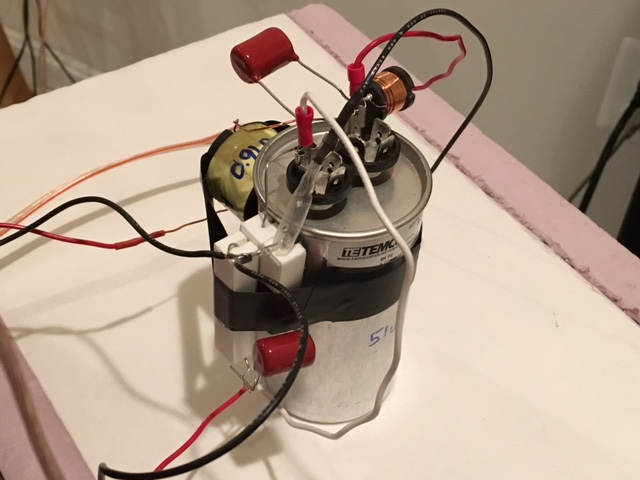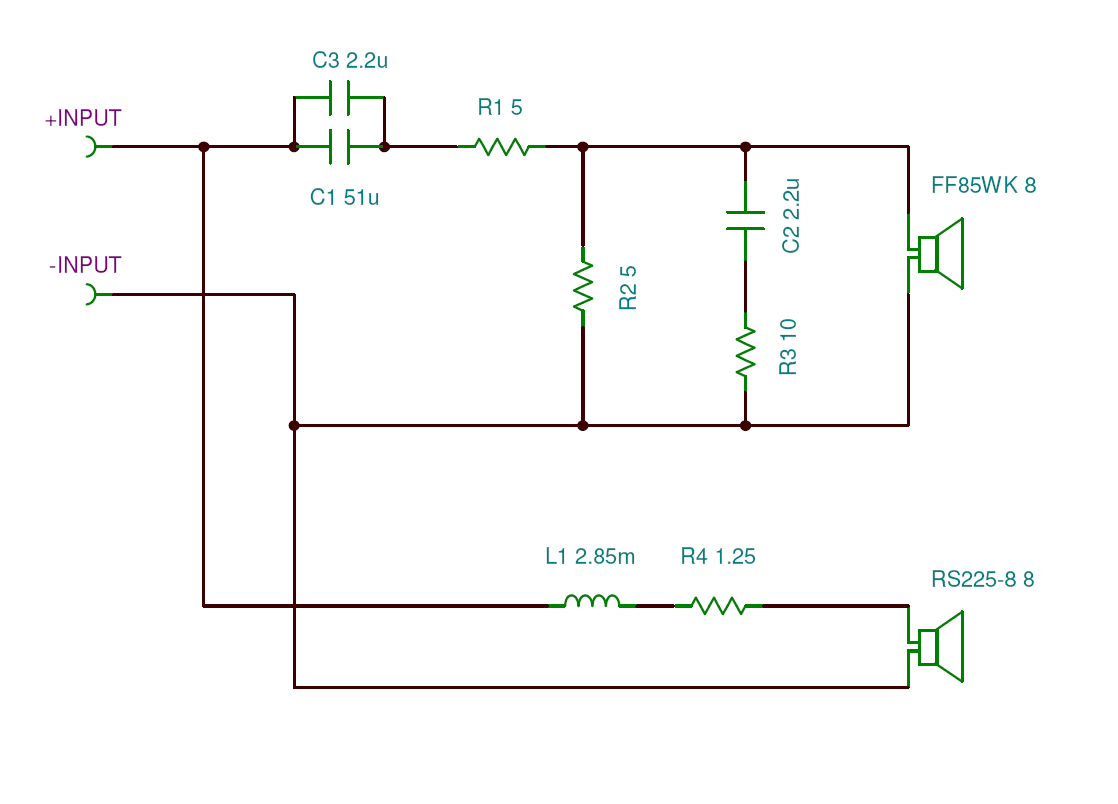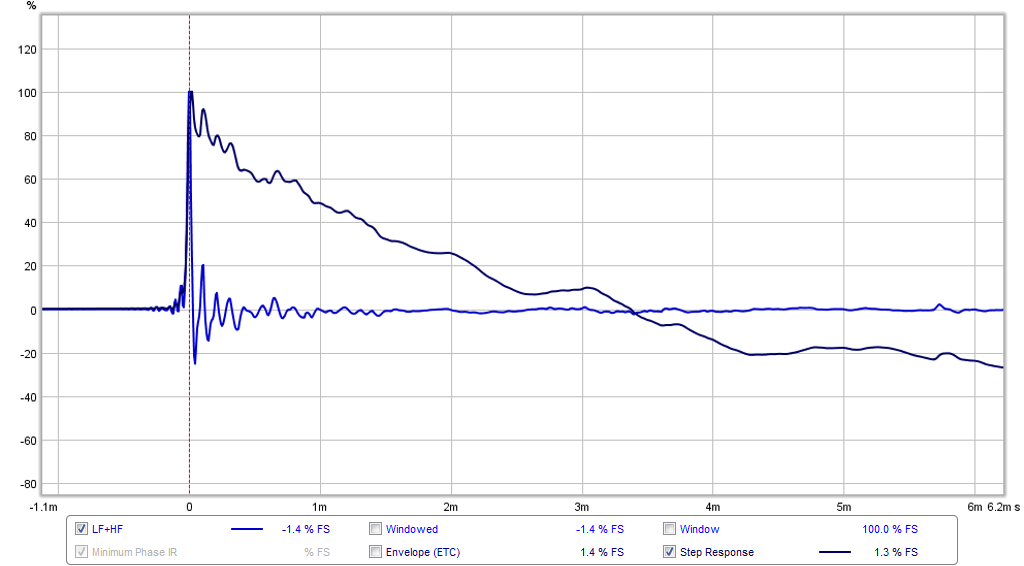Any suggestions for some of the best DC input caps?
These are going to go on a Solid State Class A Amp that is very high end and transparent.
I need to get up around 47uF - So i can do that with either one big cap or multiple small caps in parallel is fine too.
Here are 4 that I have come up with so far.
http://www.mouser.com/ProductDetail...=sGAEpiMZZMtZ1n0r9vR22e0BBN1kF1oi3VQIswfGy/U=
Mundorf MKP Series Film Capacitors
ERSE - PulseX
http://www.partsconnexion.com/capacitor_film_obbligato_gold.html
Thoughts or additions or ?
These are going to go on a Solid State Class A Amp that is very high end and transparent.
I need to get up around 47uF - So i can do that with either one big cap or multiple small caps in parallel is fine too.
Here are 4 that I have come up with so far.
http://www.mouser.com/ProductDetail...=sGAEpiMZZMtZ1n0r9vR22e0BBN1kF1oi3VQIswfGy/U=
Mundorf MKP Series Film Capacitors
ERSE - PulseX
http://www.partsconnexion.com/capacitor_film_obbligato_gold.html
Thoughts or additions or ?
Last edited:
You can't go wrong with the Mouser choice.
Mundorf = obsolete and too high a voltage/price.
Erse = why bother.
All you need to do is block DC and allow AC through.
Mundorf = obsolete and too high a voltage/price.
Erse = why bother.
All you need to do is block DC and allow AC through.
Those big MKP caps are overkill for audio input. In fact, they can cause parasitic problems at the input of an amplifier.
The real benefit of those big caps in audio is for passive speaker crossovers. They only offer a significant reduction in distortion over electrolytic caps when there is a significant AC voltage across them in the passband.
The real benefit of those big caps in audio is for passive speaker crossovers. They only offer a significant reduction in distortion over electrolytic caps when there is a significant AC voltage across them in the passband.
I like these. 😀
https://www.amazon.com/TEMCo-Motor-Run-Capacitor-RC0015/dp/B00FBRWUP0
What is the input impedance and what is the bass extension you need to get? 47uF sound high unless the input is very low impedance. Usually 10uF is sufficient for very low (circa 10Hz) extension with 22k impedance.
https://www.amazon.com/TEMCo-Motor-Run-Capacitor-RC0015/dp/B00FBRWUP0
What is the input impedance and what is the bass extension you need to get? 47uF sound high unless the input is very low impedance. Usually 10uF is sufficient for very low (circa 10Hz) extension with 22k impedance.
Last edited:
Thanks for input, no pun intended 🙂
I'm using the 47uF Nichicon Muse Green non polarized with great results. I'm always on the look out for that 10-20% bump in Sq. But it appears what im using is probably the best option.
I'm using the 47uF Nichicon Muse Green non polarized with great results. I'm always on the look out for that 10-20% bump in Sq. But it appears what im using is probably the best option.
Last edited:
Member
Joined 2009
Paid Member
Elna Silmic 2 seem to be the best to me. I have never found any other electrolytic capacitors that measured lower ESR or ESL.
I have used them with success for many years.
From comments made by Nelson Pass he also seems to recomend Elna Silmic.
If you want to minimise the effect of using an electrolytic capacitor on the input you could try using two capacitors in series. To effect this use two 100uf capacitors in series with the positive leads connected to each other. This is the same as using a 50 uf capacitor.
Don
I have used them with success for many years.
From comments made by Nelson Pass he also seems to recomend Elna Silmic.
If you want to minimise the effect of using an electrolytic capacitor on the input you could try using two capacitors in series. To effect this use two 100uf capacitors in series with the positive leads connected to each other. This is the same as using a 50 uf capacitor.
Don
Thanks for input, no pun intended 🙂
I'm using the 47uF Nichicon Muse Green non polarized with great results. I'm always on the look out for that 10-20% bump in Sq. But it appears what im using is probably the best option.
I've been using the same caps recently. I bought a couple lots of 10. They're not even that expensive. I'm very satisfied.
Sorry, but I think those are silly. Physically large caps can cause problems in an audio amplifier circuit.
I bet it looks silly too, in a circuit where all the other parts are miniature. 😀
Sorry, but I think those are silly. Physically large caps can cause problems in an audio amplifier circuit.
I bet it looks silly too, in a circuit where all the other parts are miniature. 😀
No joke. Sure, they are big and industrial looking. But far from silly if you can get past the looks. They do sound very good. Basically foil coated plastic film in oil caps for cheap.
Here as used in a transient perfect XO:


Step and impulse response:

But if you want a much more compact and decent sounding cap of about same value go with bipolar electrolytic for 47uF and bypass with a 1uF 400v MKT film cap. Compact low cost sounds great.
Last edited:
Input impedance is 2.2 k ��
Hence the 47uF
47uF gives an F-3dB of 1.5HzThanks for input, no pun intended 🙂
I'm using the 47uF Nichicon Muse Green non polarized with great results. I'm always on the look out for that 10-20% bump in Sq. But it appears what im using is probably the best option.
That is maybe just a bit too close to 20Hz to minimise the tiny distortions you might get.
It might be worth going to 2off 150uF back to back to get an effective 75uF and that gets the ratio of F-3db:20Hz up to 1:20 as recommended by D.Self for an electrolytic as a DC blocker.
You can use plastic film caps at a frequency ratio of 1:10 to avoid the extreme low end distortions.
Alternatively have a think about adopting a Buffer at the amp input to raise the effective impedance to 100k and then use a 1uF plastic film for almost zero added distortions.
There are some mighty fine Buffers in this Forum.
There are some mighty fine Buffers in this Forum.
NP caps are made by phisically joining two polarized ones, indeed 😎If you want to minimise the effect of using an electrolytic capacitor on the input you could try using two capacitors in series. To effect this use two 100uf capacitors in series with the positive leads connected to each other. This is the same as using a 50 uf capacitor.
Are they?phisically joining two polarized ones
Or is it a different method of manufacturing the insulating film on BOTH sides of the common foil?
Or some other clever manufacturing trick/secret?
It was reported in that "Capacitor Test" that when operating as a filter that back to back Bi-Polar capacitors performed slightly better than a single Bi-Polar capacitor. He stated that performance of the back to back Bi-Polar was almost as good as plastic film.
Last edited:
Has it been proven that you can hear the difference between any sort of capacitor? I doubt it. Performed a blind test? If not, I'd say it's all in your head, and not in the music.
Member
Joined 2009
Paid Member
Here as used in a transient perfect ....
I wouldnt put that in your luggage
No.picowallspeaker said:NP caps are made by phisically joining two polarized ones, indeed
I believe a bipolar electrolytic uses two anode foils, so there is a dielectric oxide layer on both sides of the electrolyte.AndrewT said:Or is it a different method of manufacturing the insulating film on BOTH sides of the common foil?
Or some other clever manufacturing trick/secret?
2.2k is a rather low input impedance. If this is nonlinear too (as is often the case) then it really needs a buffer. Then sensible value caps can be used, and the source does not need to have extremely low output impedance.
Input impedance is 2.2 k ��
Hence the 47uF
Thanks for input, no pun intended 🙂
I'm using the 47uF Nichicon Muse Green non polarized with great results. I'm always on the look out for that 10-20% bump in Sq. But it appears what im using is probably the best option.
47uF gives an F-3dB of 1.5Hz
That is maybe just a bit too close to 20Hz to minimise the tiny distortions you might get.
It might be worth going to 2off 150uF back to back to get an effective 75uF and that gets the ratio of F-3db:20Hz up to 1:20 as recommended by D.Self for an electrolytic as a DC blocker.
You can use plastic film caps at a frequency ratio of 1:10 to avoid the extreme low end distortions.
The generally used frequency ratio is 10:1 for the passive filters at the input to a power amplifier....................2.2k is a rather low input impedance. If this is nonlinear too (as is often the case) then it really needs a buffer. Then sensible value caps can be used, and the source does not need to have extremely low output impedance.
That leaves us using 2Hz to 200kHz as our passive filter target passband @ F-3dB.
For a 2k2 input impedance one could use C= 1 / {2 Pi R F} = 1/(2*3.14*2200*2) = 36uF
But for electrolytics this should probably be doubled to avoid the distortion measured by D.Self, i.e. use >=72uF
It has been found that back to back electrolytics perform better as very low distorion generating filters than do single electrlytics. This applies to both Polar and Bi-Polar electros
I would recommend for the highest quality audio through/into a 2k2 Zin that one use two 150uF Bi-Polar electrolytics in series and back to back.
But 2k2 is extremely low for an audio interface.
The Zin should have tolerances of better than 0.1% for hot to cold matching. It is a balanced impedance interface and the IMPEDANCE should be balanced. The capacitors also need to be matched. I have suggested in the past that the cap tolerance could be relaxed to ±1% and so far no Members have come back on this.
Inserting a Buffer into the amp input may give better performance than living with 2k2 and what it requires of the other components.
The output impedance of the Source should also be balanced impedance.
Zout of 50r ±10r is NOT balanced. Any manufacturer that sells that level of unbalance in a high end audio balanced interface needs to pilloried. They don't deserve to be allowed to market rubbish like that.
It would cost nothing extra to adopt 51r ±1%, or go to 50r1 ±0.1% for less than a dollar for the four resistors on the balanced stereo output.
Last edited:
- Status
- Not open for further replies.
- Home
- Design & Build
- Parts
- Input DC blocking caps